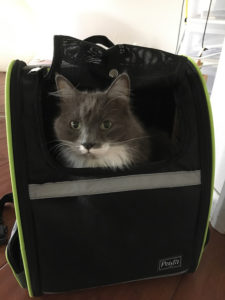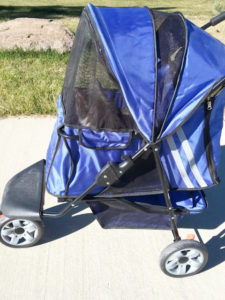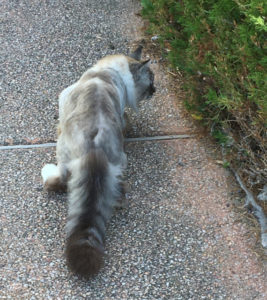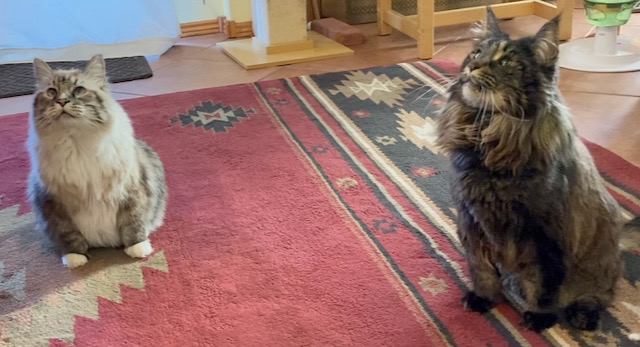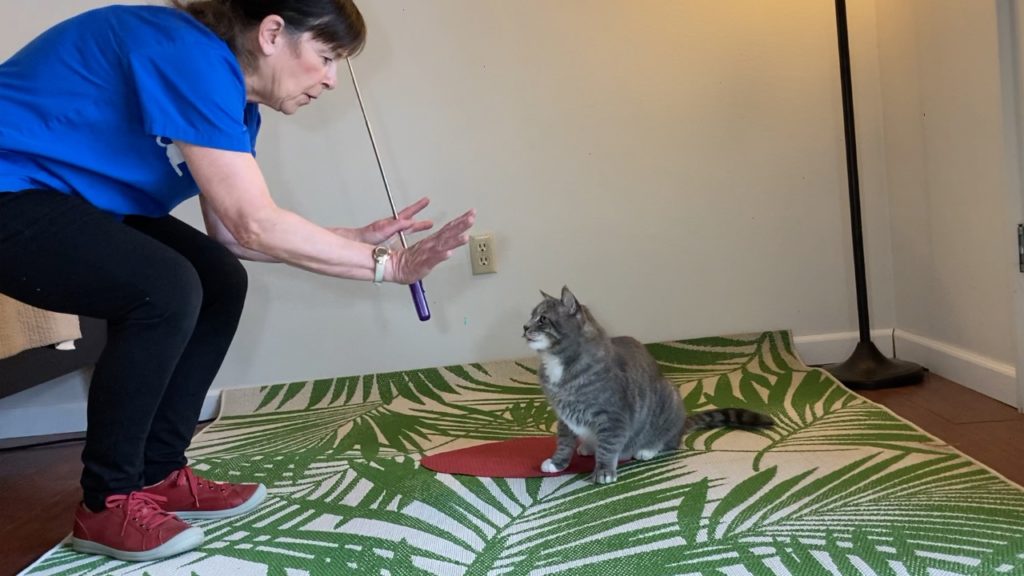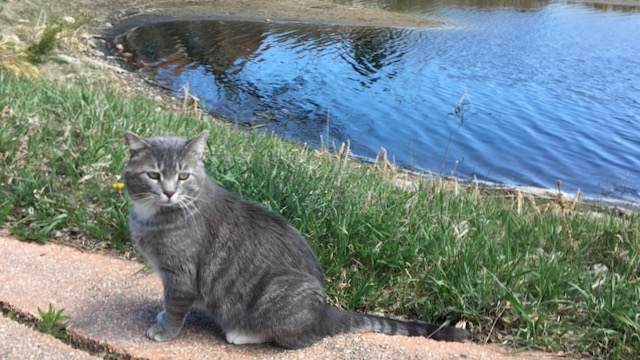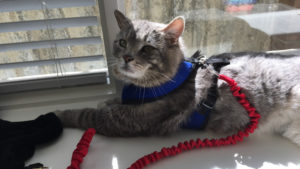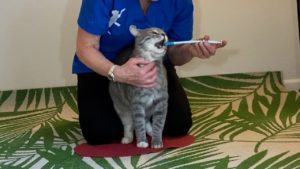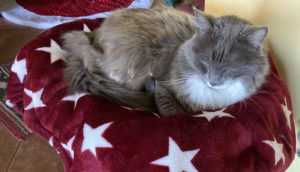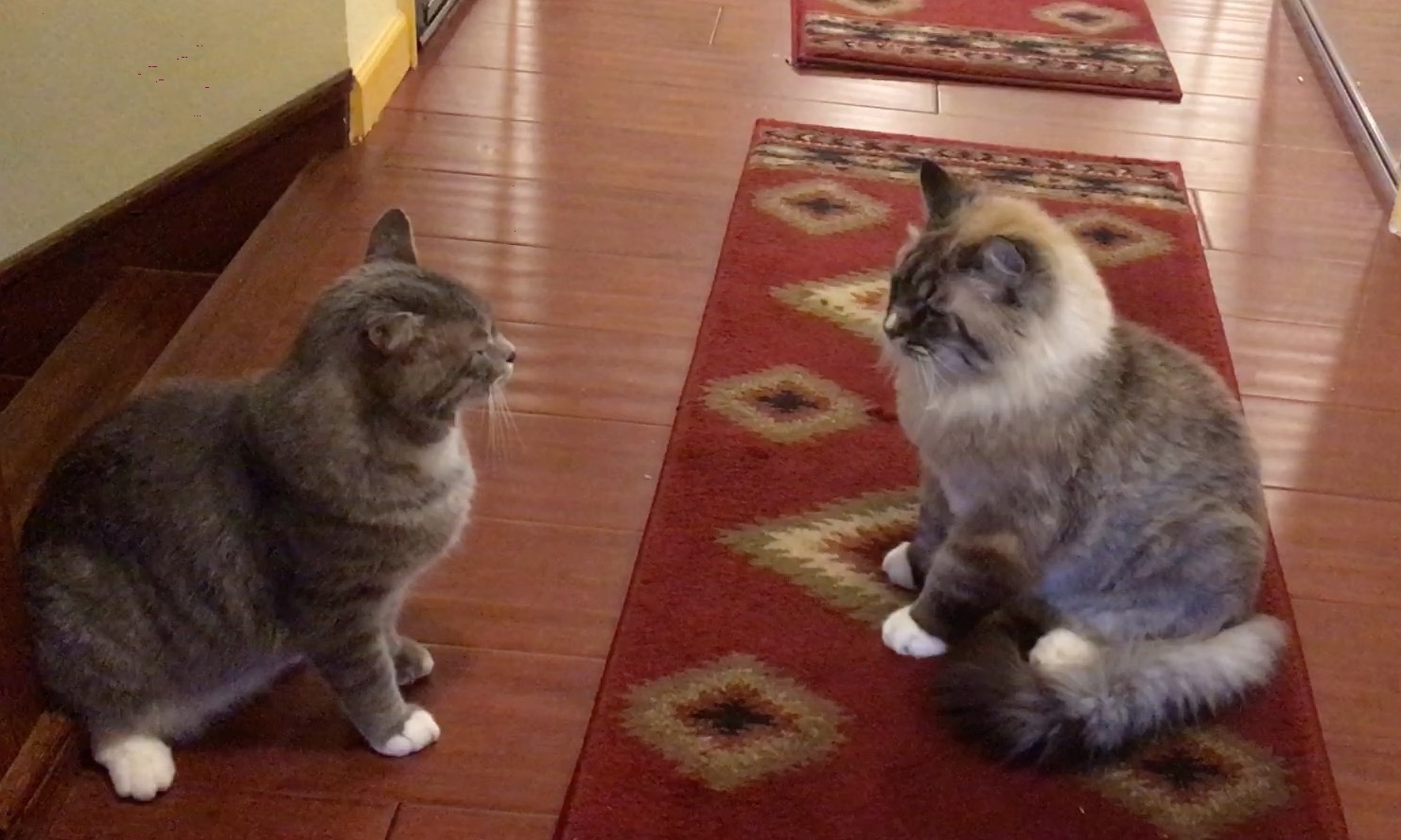
About a week ago, we had invited family members to the traditional Thanksgiving dinner. Appetizers had been set out to snack on prior to the main meal. There was a cheese and cracker plate, with an open box of crackers on it, where folks could serve themselves, taking a cracker and a slice of cheese.
As we were eating dinner, I happened to look over to the counter with the cheese plate. Gus had gotten up on the counter, and was helping himself to a cracker. He very carefully selected a single cracker with his mouth without disturbing the other crackers, the plate or the box. He then carefully backed away to nibble on his prize.
What struck me was that he only took one cracker, he did not paw at the box or knock it on the floor. Had he been watching us? Can cats learn from us?
Trial and Error Learning
A cat presented with a treat ball containing treats for the first time will examine and smell the ball thoroughly, then perhaps nudge it with her nose while continuing to smell the ball. If some treats come out, the cat may then try nudging the ball again or try pawing at it. With each trial, the cat will refine her method of obtaining treats.
Social Learning – Can cats learn from us?
Cats can also learn by watching other cats do things – kittens watch their mother attentively as she manipulates prey and chooses things to eat. Their later success as hunters and the food preferences they develop reflects this instruction.
For the cat, other species are worth watching too – for example, humans, dogs and raccoons may give some invaluable lessons in manipulating doors to reach food or desirable places.
A cat will learn to use a microchip feeder or food puzzle faster if a patient owner sits by with treats and demonstrates the feeder or puzzle operation, speeding up the trial and error process.
“Do As I Do”
“Do As I Do” is a fairly new training method for dogs developed by Claudia Fugazza at Eötvös Loránd University in Budapest. In the “Do As I Do” method, an owner will demonstrate a behavior to her dog and then ask him to repeat it.
Can a cat “Do As I Do”?
In 2019, Dr. Fugazza decided to test this kind social learning in a cat. Her subject was an 11-year-old female cat, called Ebisu. Ebisu lived with her owner, Fumi Higaki, in Ichinomia, Japan. Fumi Higaki is a professional dog trainer, experienced in the “Do As I Do” method for training dogs.
Training Ebisu was a two-step process:
- First, Ebisu learned that the “Do It!” command meant that she should copy what her owner had done. The owner used three behaviors that Ebisu already knew to train the “Do It” command. For example, the owner would twirl around, then give Ebisu the “Do it!” command and also give Ebisu the verbal cure to twirl around.
- Next, the owner demonstrated three other behaviors that Ebisu was familiar with and gave her the “Do It!” command without the verbal cues. Once Ebisu successfully imitated her owner, she was ready to learn some new behaviors by copying her owner.
Ebisu successfully learned two new behaviors through imitating her owner:
- Sliding a lid on a container to open it – Ebisu succeeded on the first try!
- Placing her forearms on a book.
At this point, Ebisu was judged ready to be tested and two new behaviors were assessed in 18 test trials:
- Placing her paw on a box
- Rubbing her face on a box
During these trials, Ebisu mimicked her owner 80% of the time. Fumi would put her hand on the box (or rub her face on the box). She would then tell Ebisu to “Do It!”, and Ebisu would put her paw on the box (or rub her face on the box).
So what do we learn from this?
- Cats are able to mimic the actions of a human.
- They are able to adapt human actions to their own bodies – for example, the human touches a box with her hand and the cat touches the box with a front paw.
So, it is worthwhile for us to demonstrate the operation of food puzzles, automatic feeders, cat doors…to help our cats learn how to use these devices. It should speed up the learning process!
Back to “cracker snatcher” Gus…can cats learn from us?
I really don’t know if Gus learned to pick out a single cracker by watching people but it’s fun to think that he did. And, not having opposable thumbs, he was not able to pick out the cracker with a paw but instead extracted it with his mouth, adapting the action so that he could perform it successfully!
Here is Gus with the box of crackers. Enjoy the video!

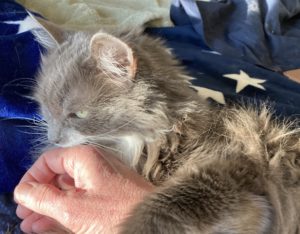

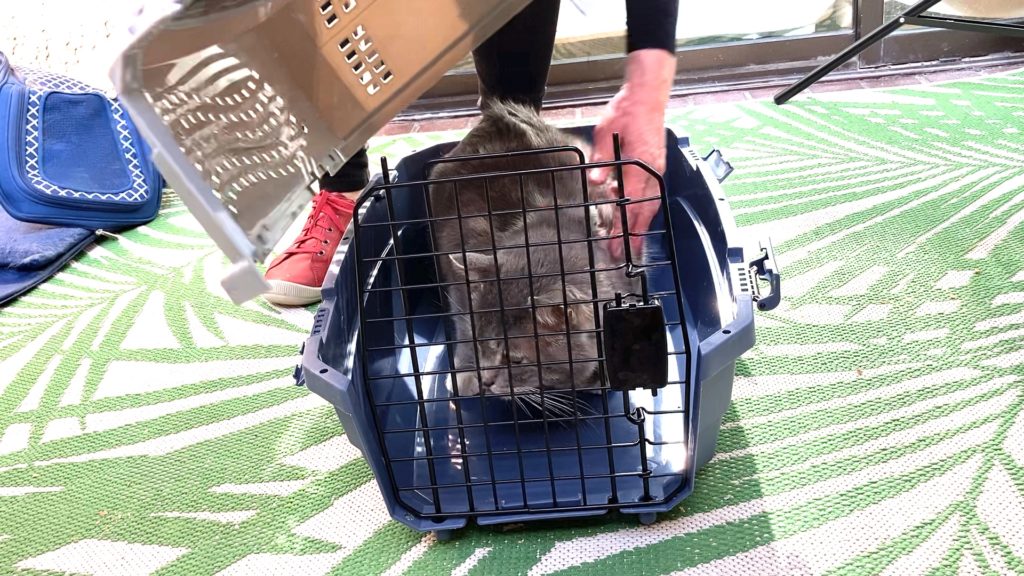
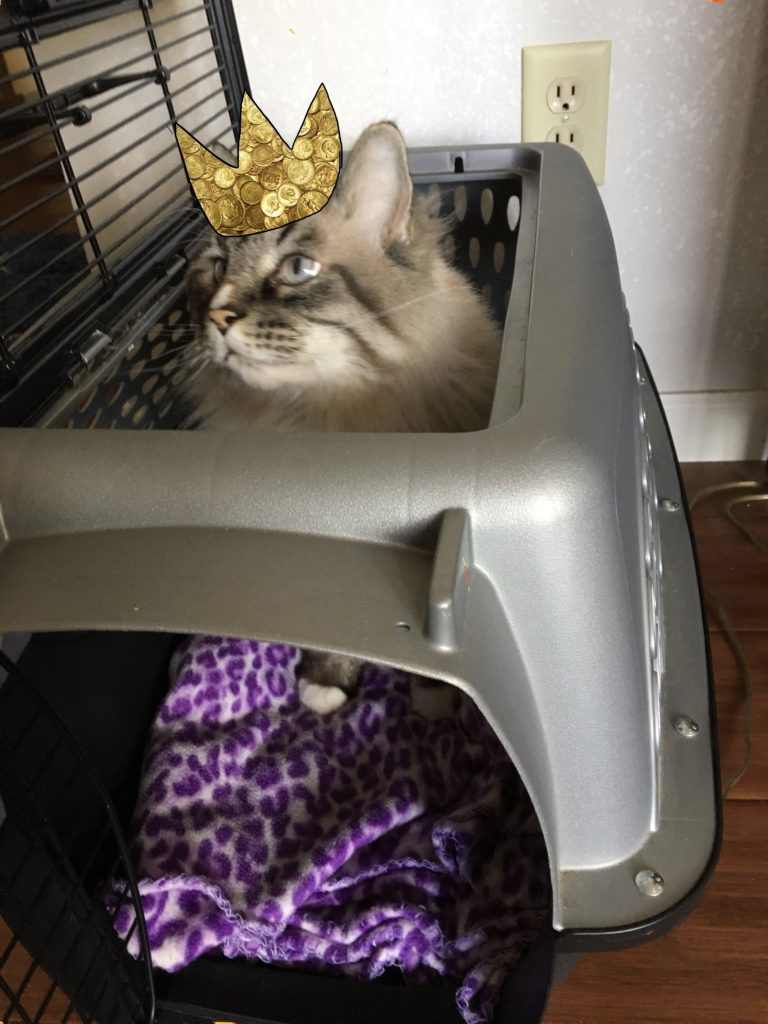
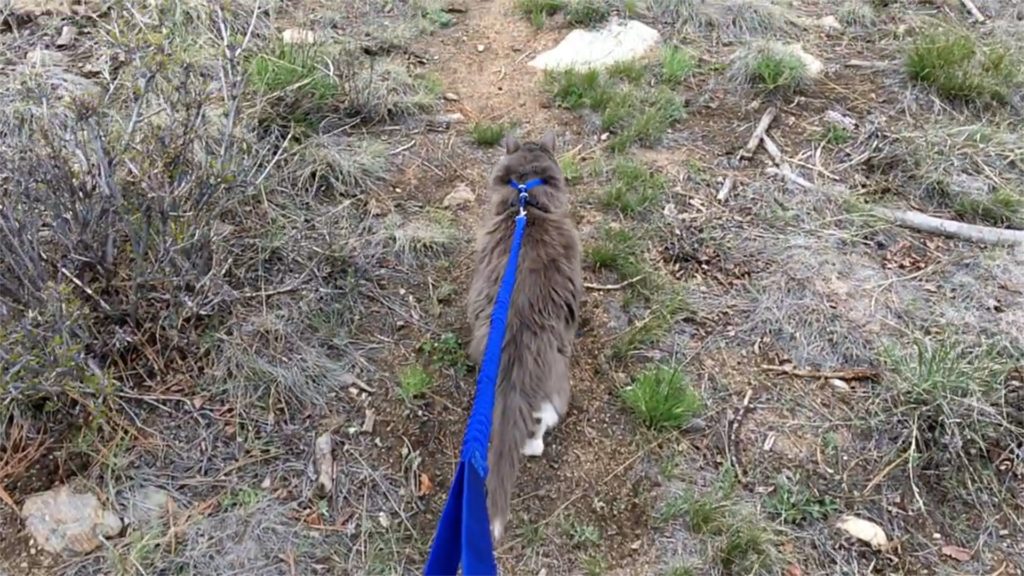 I have seen a lot of advertisements and posts recently on social media about taking your cat for a walk. This can be a source of enrichment for your cat; it is also be a great time to take photos of your friend and bond with her more.
I have seen a lot of advertisements and posts recently on social media about taking your cat for a walk. This can be a source of enrichment for your cat; it is also be a great time to take photos of your friend and bond with her more.

